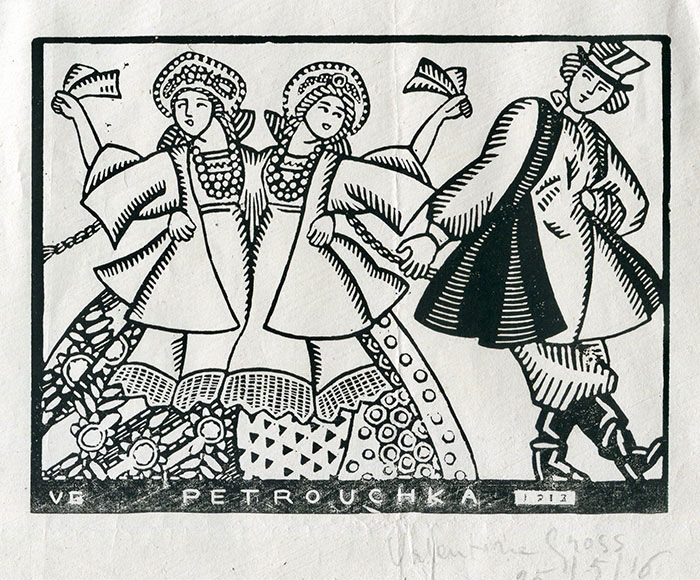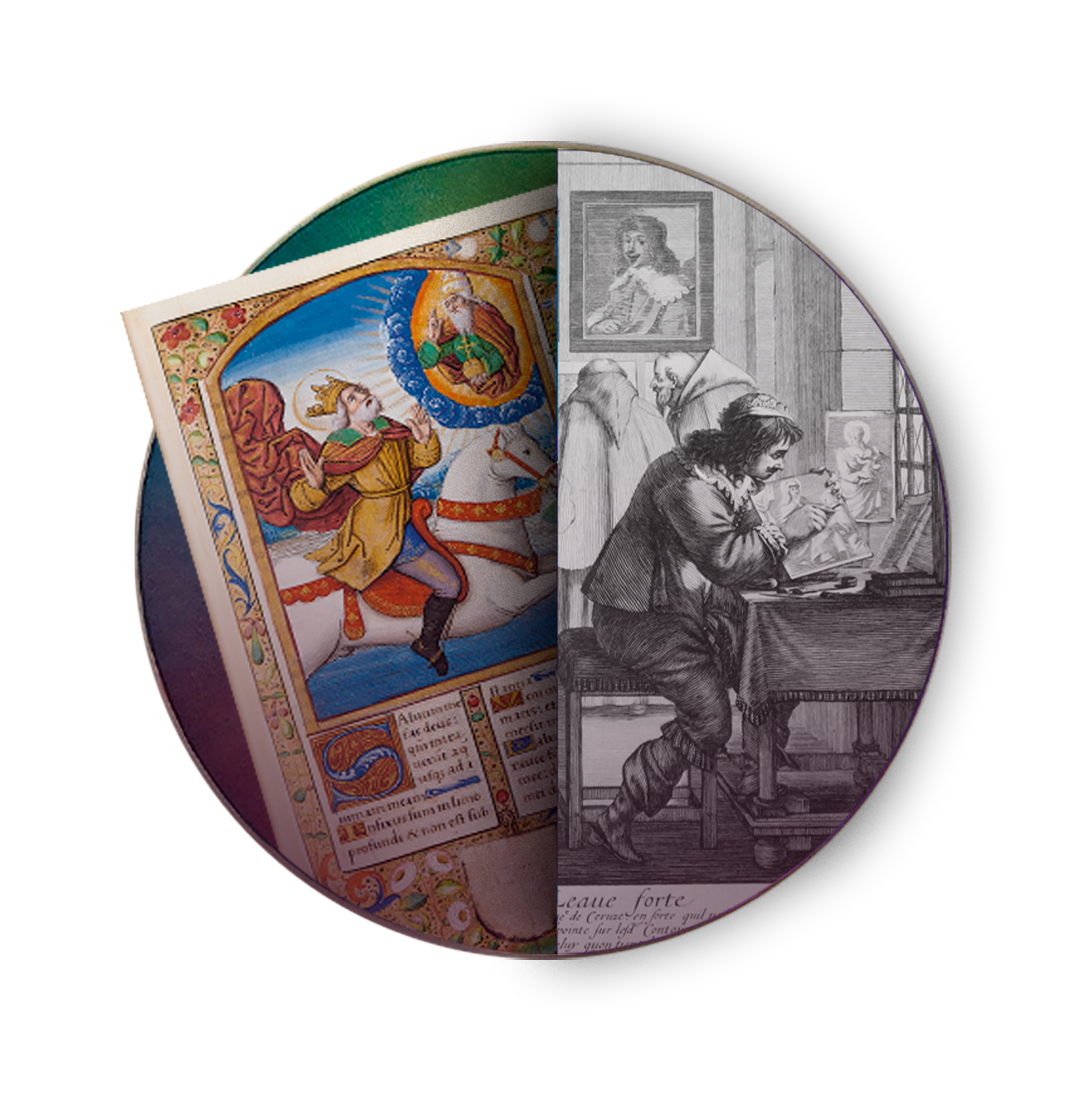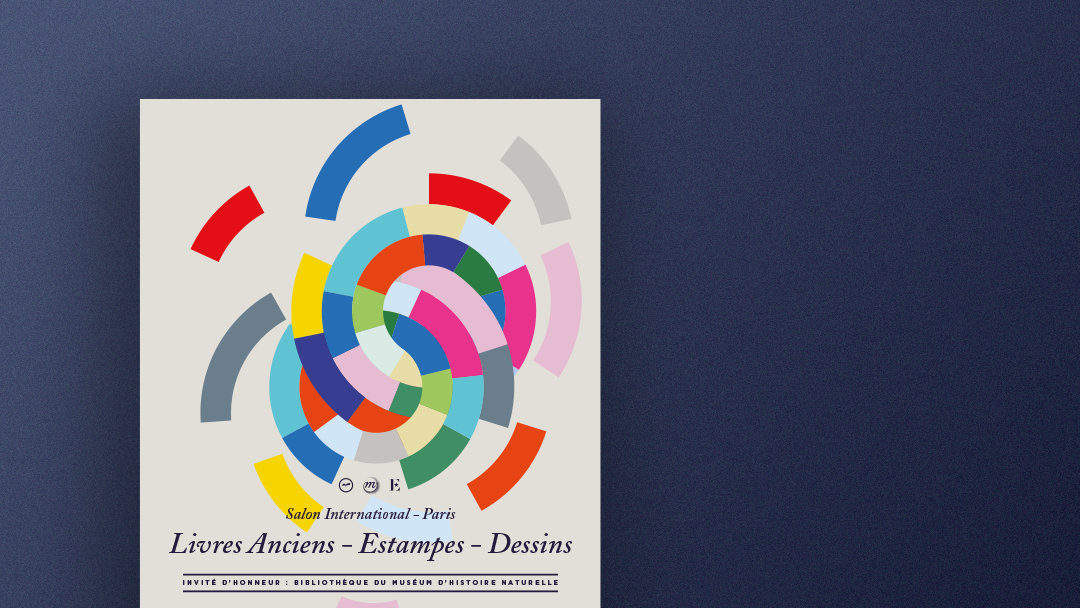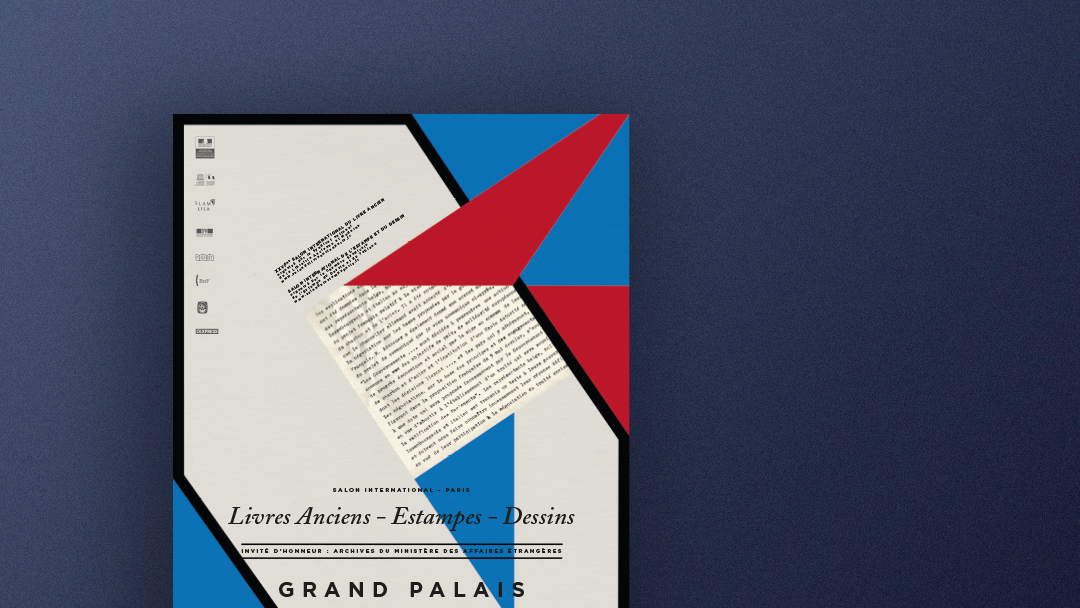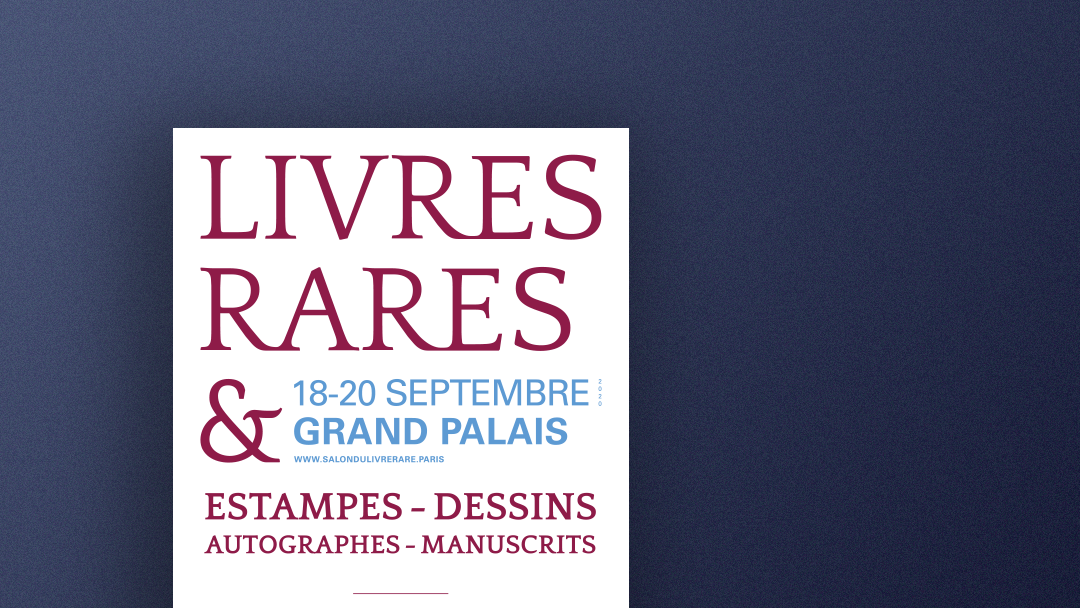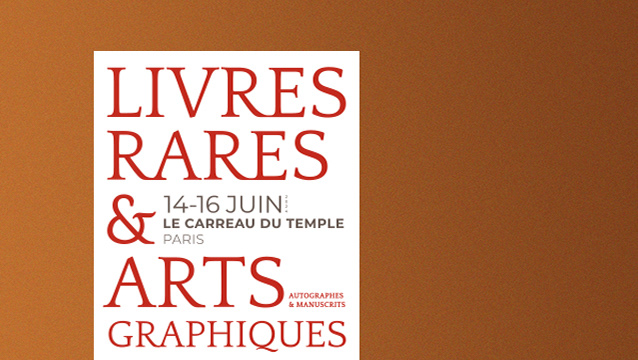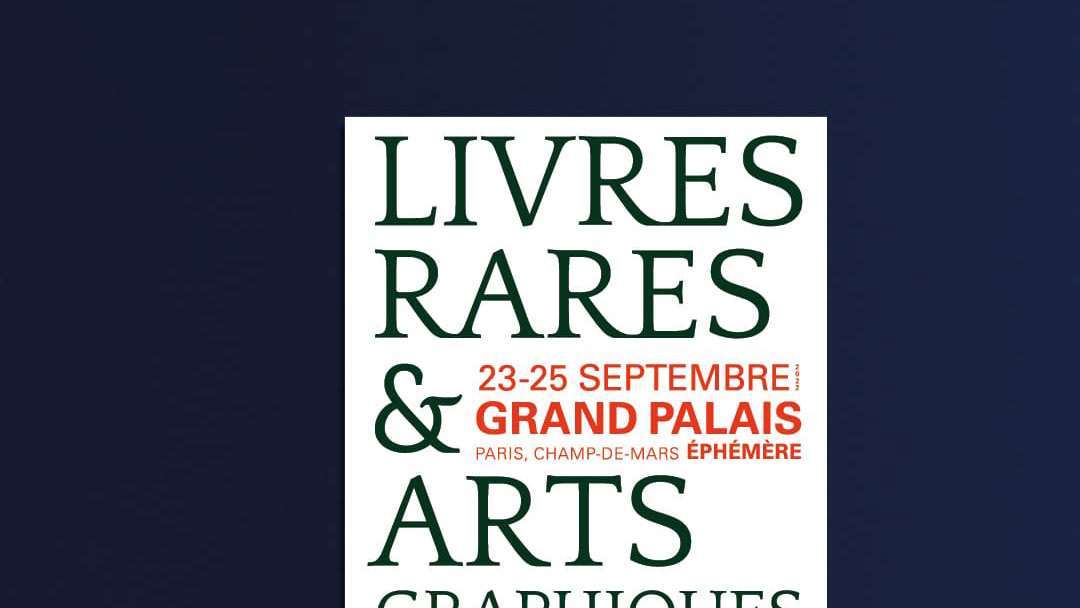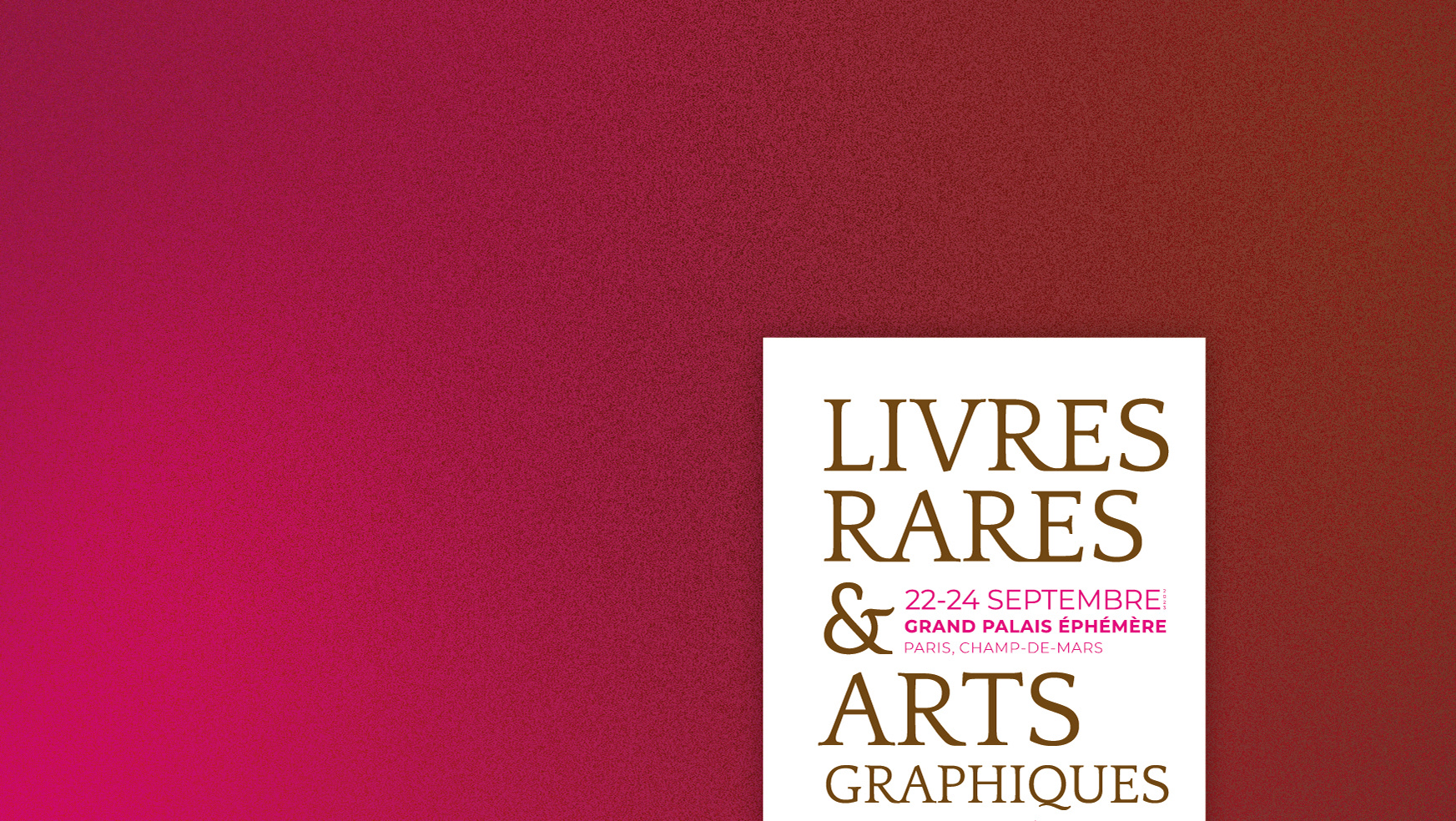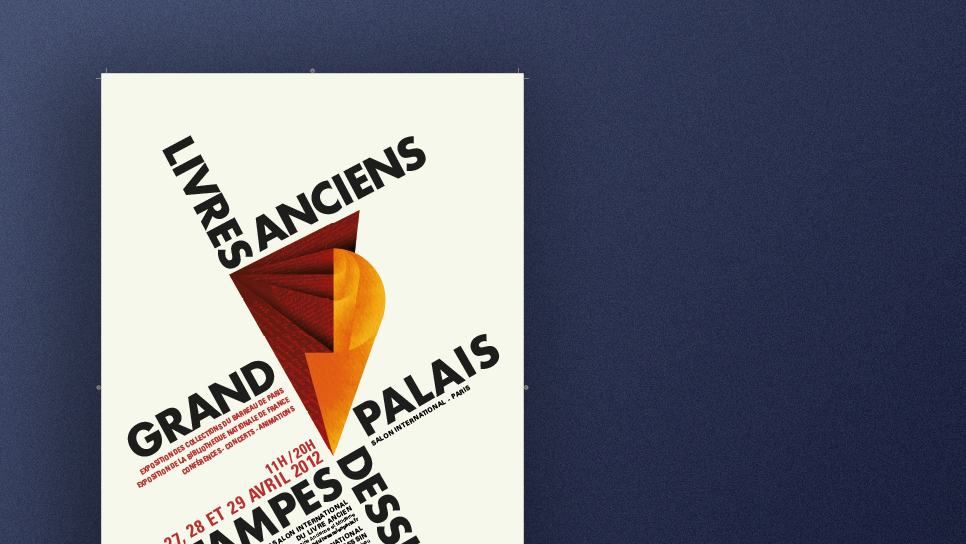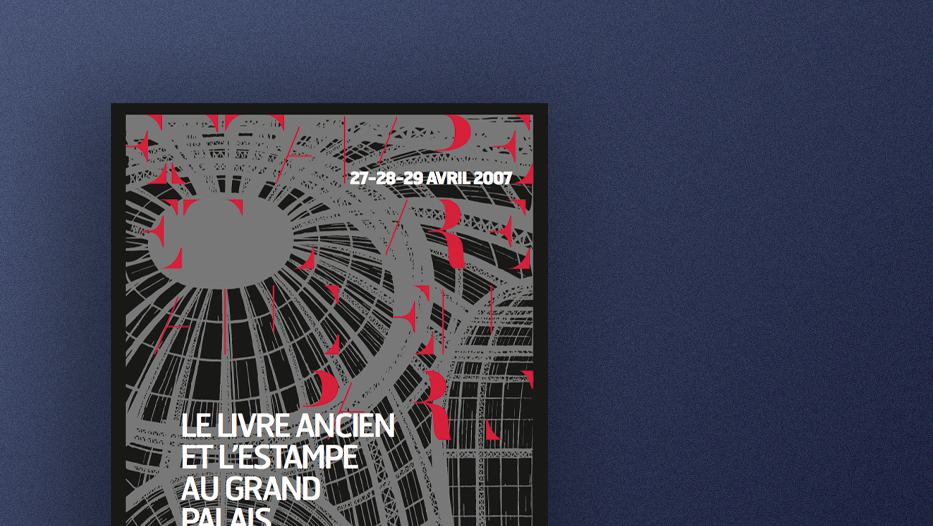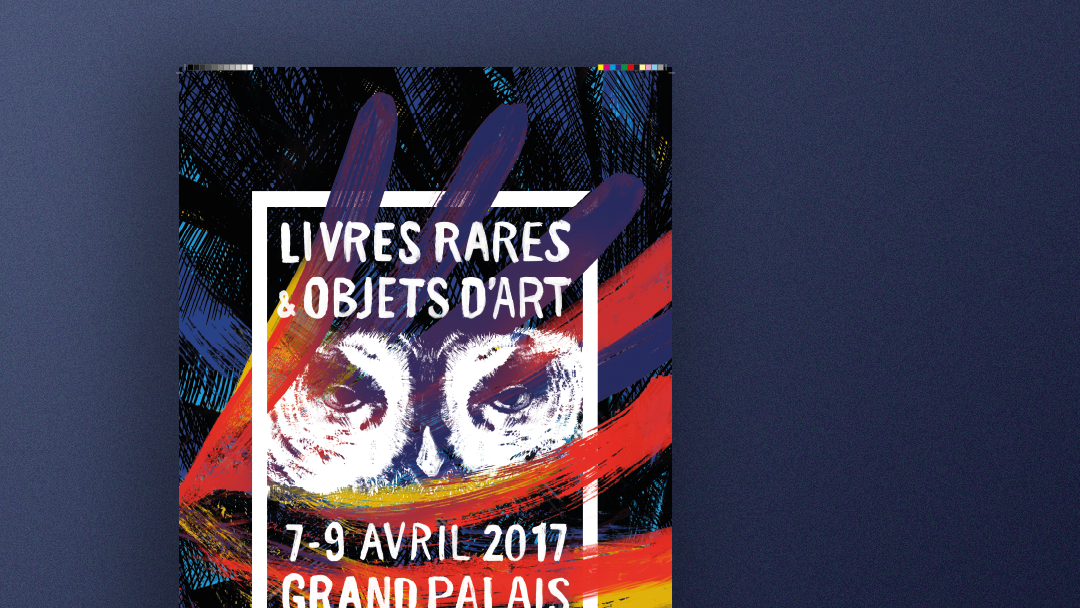Institute for Contemporary Publishing Archives (IMEC) (D24, West Nave)
a commitment to excellence for an outstanding written heritage
One of the most esteemed archive conservation institutes in Europe, the Institut Mémoires de l’Édition Contemporaine preserves and showcases an exceptional collection dedicated to the history of thought and contemporary arts.
Since its establishment, the IMEC has contributed to raising awareness of research on literary, publishing, artistic and intellectual life.
Sketches and manuscripts, letters, notes and workbooks, translations, graphic and photographic works, audiovisual documents, digital files, first editions and documents… this rich, largely unpublished collection, documents a key part of the history of ideas and forms, and recreates the fusion of intellectual, writing and artistic ideas of an era.
A general interest association, the institute's role is to manage the resources entrusted to it and to open them up, culturally and educationally, to as wide an audience as possible.
Since its establishment, the IMEC has contributed to raising awareness of research on literary, publishing, artistic and intellectual life.
Sketches and manuscripts, letters, notes and workbooks, translations, graphic and photographic works, audiovisual documents, digital files, first editions and documents… this rich, largely unpublished collection, documents a key part of the history of ideas and forms, and recreates the fusion of intellectual, writing and artistic ideas of an era.
A general interest association, the institute's role is to manage the resources entrusted to it and to open them up, culturally and educationally, to as wide an audience as possible.
preserve and communicate, a dual objective
Open, right from the beginning to the world of publishing, books and reviews, the collections at the IMEC contain archives of the greatest literary figures of our time – from Jean Paulhan to Marguerite Duras, from Jean Genet to Alain Robbe-Grillet, from Philippe Soupault to Roland Dubillard. The collections in the institute also host a major collection devoted to contemporary thought and social sciences, from Emmanuel Levinas to Jacques Derrida, from Georges Duby to Jean-Pierre Vernant, from Félix Guattari to Edgar Morin. The arts are of course present, in all their diversity: Patrice Chéreau, Gisèle Freund, Jean Hélion, Éric Rohmer, Alain Resnais, Erik Satie, Pierre Schaeffer or Antoine Vitez. The IMEC offers a first-class historical and documentary overview of the publishing, literary and artistic life of the contemporary period.
a cultural and educational role
It only makes sense to preserve this heritage if it reaches as many people as possible. To enable the public to meet writers and researchers, to exchange ideas on works and the major movements in contemporary thought, the IMEC is becoming a leading literary scene in itself. Artistic and cultural education projects accompany the programme and help to raise awareness amongst the young audience. The historic presentation of the monument, writing workshops, exhibition visits and a chance to meet those in the book industry leads to the discovery of the richness of the collection and the importance of the written tradition. Publications, exhibitions, and the loan of articles help raise national and international awareness of the institute's archives.
collect, classify, protect
Entrusted by authors or beneficiaries, publishing houses or cultural associations, the archives are preserved in their entirety, classified in an intellectually consistent way and are carefully archived. Through its various resources and collections (archives of authors and artists, publishing houses, specialist libraries, collections of reviews), the IMEC is piecing together, between publishing, writing, arts and thought, the networks making up the fabric of our cultural life, opening up new research perspectives.
a place dedicated to research
Coming from all over the world to browse the archives, researchers are offered the institute's guidance and advice service as well as the search tools for all resources and collections. Researchers can also stay in Ardenne Abbey. The institute is building a policy of professional and scientific collaboration with the main national and international research institutions. Conferences, workshops and seminars encourage exchanges and showcase archives. Lastly, Ardenne Abbey offers conference rooms, dining and accommodation areas, and a conductive environment for meeting and reflection.
a remarkable site
Founded in the XII century, steeped in history and painstakingly restored, Ardenne Abbey holds all of the IMEC's collections and activities.
The abbey's church, converted into a large library, offers researchers the peace and quiet that monastic buildings offered in the past. The archive building holds the archive handling workshops and storage facilities that meet the strictest conservation and security requirements.
Demonstrations, meetings and exhibitions as well as research and writing workshops are held in the large farmyard, the gardens, tithe barns and the press.
Owned by the regional council of Normandy, classified as an historical monument, the abbey has been awarded the prestigious label of a cultural meeting centre which are historic monuments that sponsor specific cultural projects.
The abbey's church, converted into a large library, offers researchers the peace and quiet that monastic buildings offered in the past. The archive building holds the archive handling workshops and storage facilities that meet the strictest conservation and security requirements.
Demonstrations, meetings and exhibitions as well as research and writing workshops are held in the large farmyard, the gardens, tithe barns and the press.
Owned by the regional council of Normandy, classified as an historical monument, the abbey has been awarded the prestigious label of a cultural meeting centre which are historic monuments that sponsor specific cultural projects.
The IMEC receives the support of the Ministry of Culture and Communication (DRAC in Normandy) and the region of Normandy.
Abbaye d’Ardenne | 14280 Saint-Germain-la-Blanche-Herbe | +33 (0)2 31 29 37 37
Paris office | 4, avenue Marceau 75008 Paris | +33 (0)1 53 34 23 23 | www.imec-archives.com | Facebook | Twitter
Paris office | 4, avenue Marceau 75008 Paris | +33 (0)1 53 34 23 23 | www.imec-archives.com | Facebook | Twitter
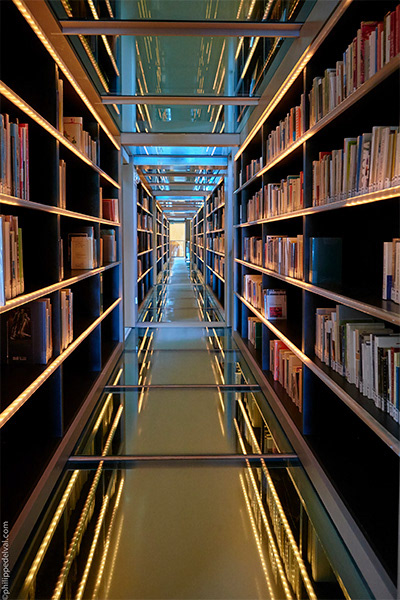
Bibliothèque de l’IMEC, © Philippe Delval
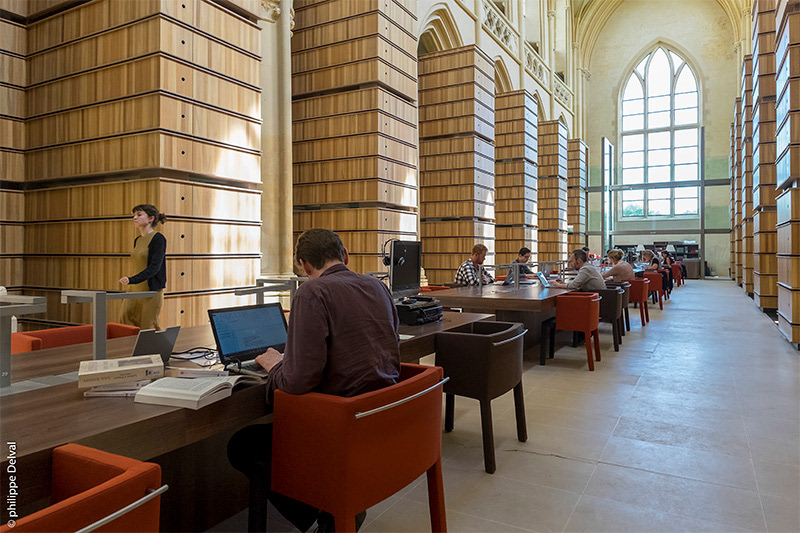
Bibliothèque de l’IMEC, © Philippe Delval
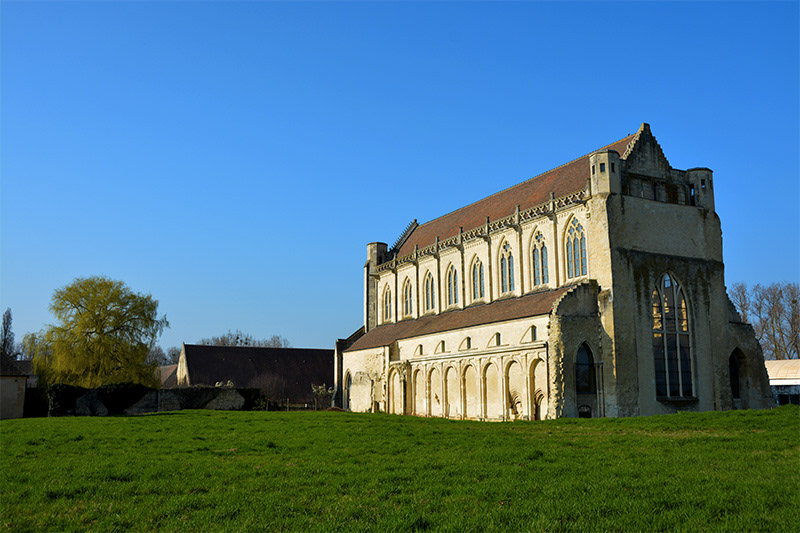
Extérieur de l’Abbaye d’Ardenne, © IMEC
The French National Library’s Department of Prints and Photography at the International Rare Book Fair (Mezzanine floor, West Nave)
The Department of Prints and Photography is pleased to participate in the International Rare Book and Art Objects Fair for the twelfth time. This not-to-be-missed event provides the French National Library with the opportunity to present a selection of remarkable works. During the fair, the enthusiastic and enlightened public can thus enjoy access to works which are not often exhibited. It is also the chance for the public to talk to the curators of the collections and to learn more about the department whose reading rooms are open throughout the year to students, artists, researchers and aficionados of graphic arts.
Since it was founded in 1667 by Colbert, the French National Library's Department of Prints and Photography has collected and maintained a collection of some ten thousand prints, posters and images from every school, from their origins to the present day. The collection is now one of the oldest and most extensive in the world. Moreover, it continues to expand thanks to the donations and generosity of major collectors and benefactors and through the legal deposits of engravers and publishers still in effect which enables the works of contemporary artists to rub shoulders with those of the old masters.
Focussing on the theme of creative genius, the French National Library’s stand will present a selection of prints, drawings and posters from the modern to contemporary periods. Prints are a medium that offer the exceptional opportunity of being able to follow the different stages of the artist’s work: through the different “states” of the print, the engraved die changes giving rise to drafts documenting the work of the engraver while becoming works of art in their own right. Interim drafts or unfinished prints, colourings, prints “before their time”: we will see the creative genius of these artists unfolding before our very eyes!
Since it was founded in 1667 by Colbert, the French National Library's Department of Prints and Photography has collected and maintained a collection of some ten thousand prints, posters and images from every school, from their origins to the present day. The collection is now one of the oldest and most extensive in the world. Moreover, it continues to expand thanks to the donations and generosity of major collectors and benefactors and through the legal deposits of engravers and publishers still in effect which enables the works of contemporary artists to rub shoulders with those of the old masters.
Focussing on the theme of creative genius, the French National Library’s stand will present a selection of prints, drawings and posters from the modern to contemporary periods. Prints are a medium that offer the exceptional opportunity of being able to follow the different stages of the artist’s work: through the different “states” of the print, the engraved die changes giving rise to drafts documenting the work of the engraver while becoming works of art in their own right. Interim drafts or unfinished prints, colourings, prints “before their time”: we will see the creative genius of these artists unfolding before our very eyes!
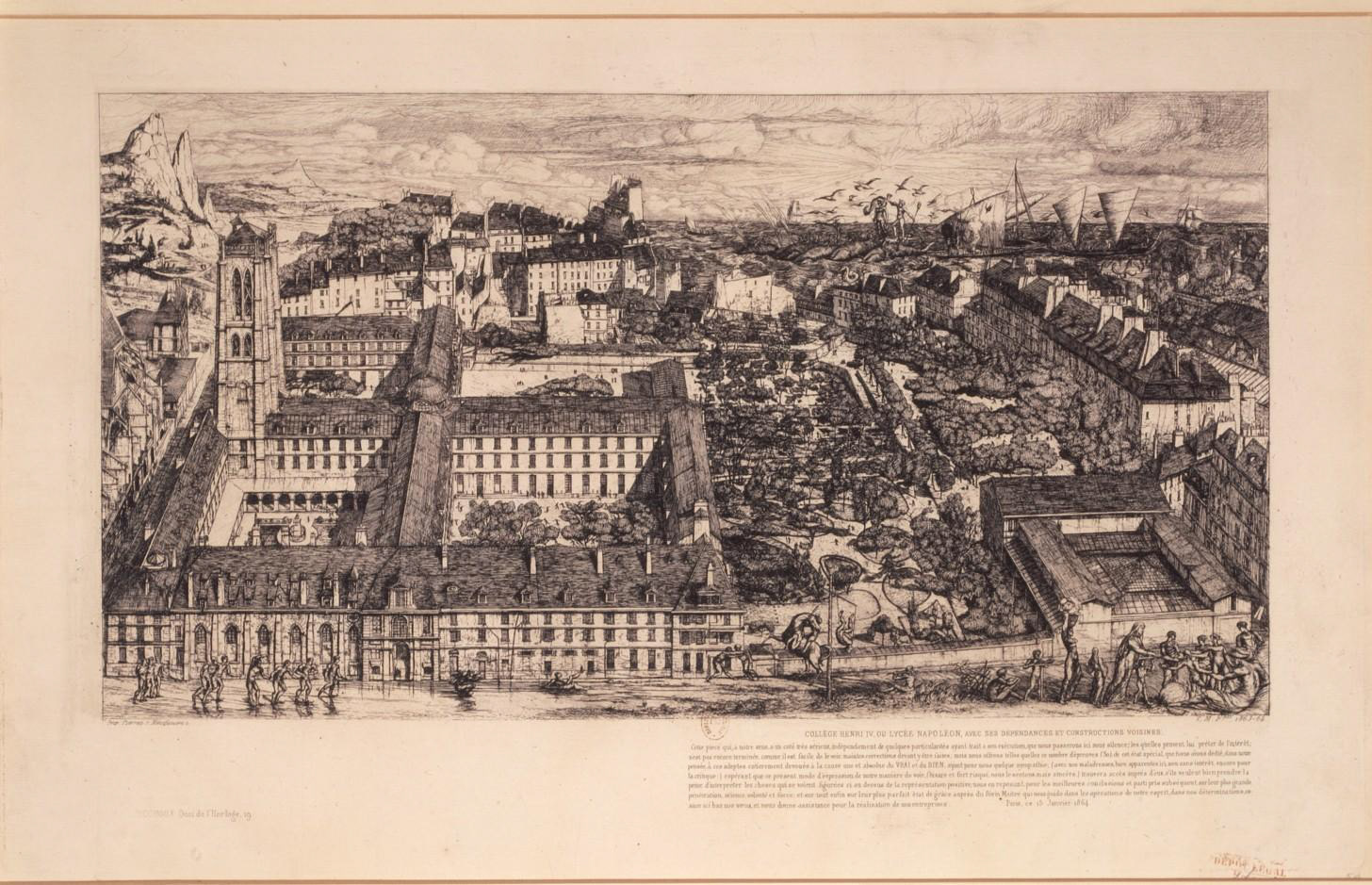
Charles Meryon, Collège Henri IV, eau-forte, 1864. BnF, Estampes, RESERVE EF-397-BOITE FOL et RESERVE EF-397 (4)-FOL
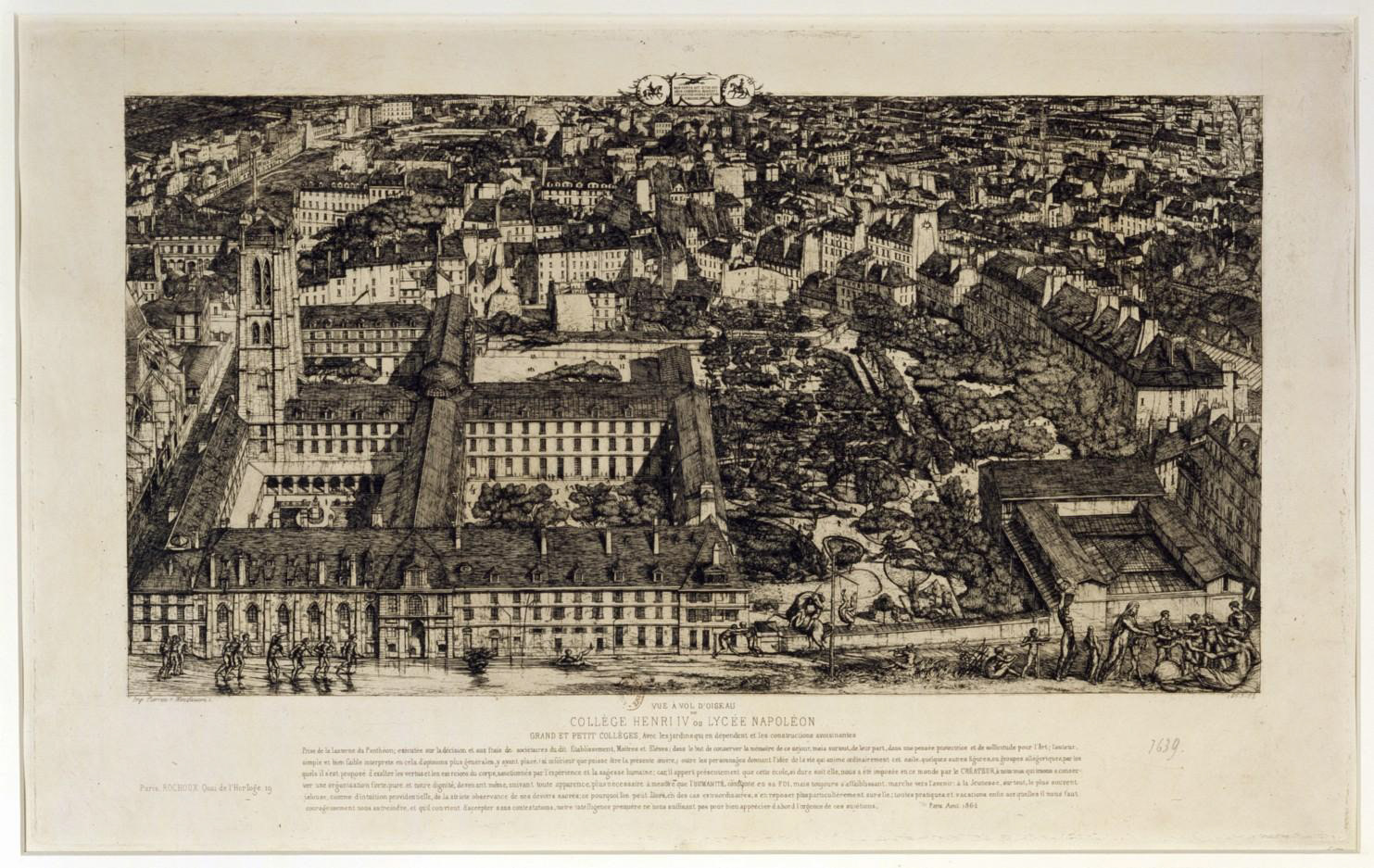
Charles Meryon, Collège Henri IV, eau-forte, 1864. BnF, Estampes, RESERVE EF-397-BOITE FOL et RESERVE EF-397 (4)-FOL
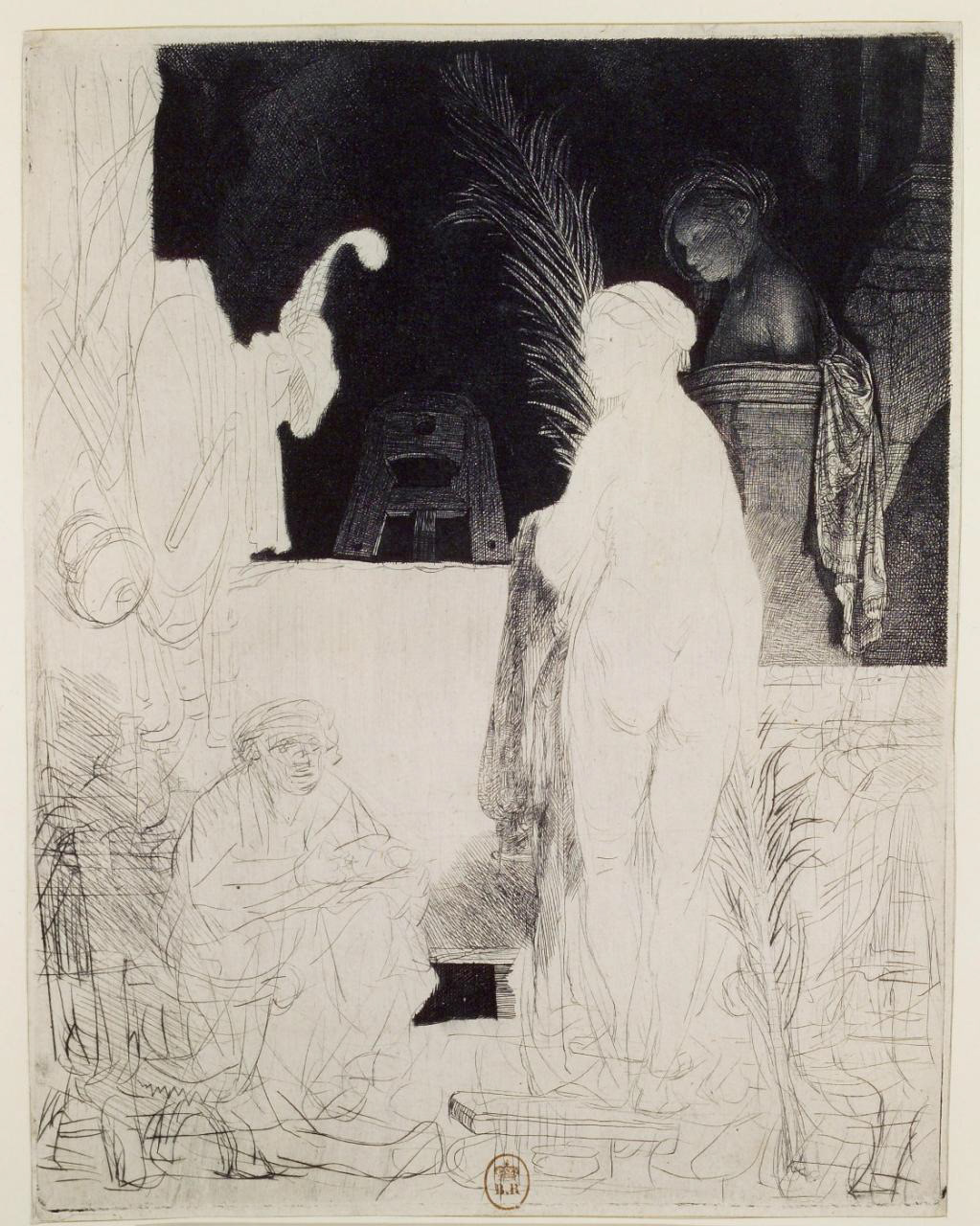
Rembrandt, L’Artiste dessinant d’après le modèle, eau-forte, 1639 (?). BnF, Estampes, RESERVE CB-13 (A)-BOITE
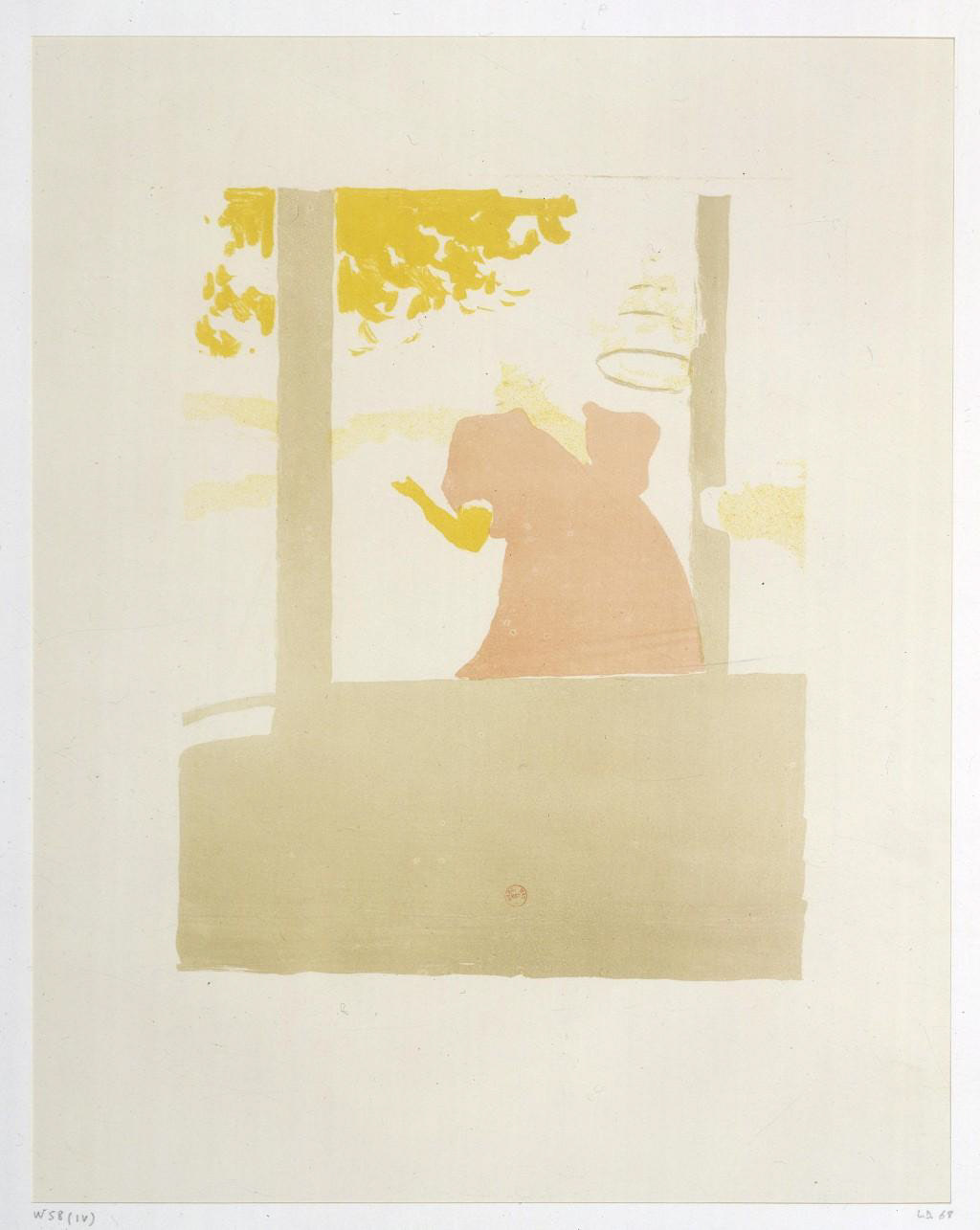
Henri de Toulouse-Lautrec, Aux Ambassadeurs - Chanteuse au café-concert (épreuve d'essai sur vélin en jaune, beige et rose saumon, et état définitif), lithographie, 1894. BnF, Estampes, RESERVE DC-361 (4)-FOL
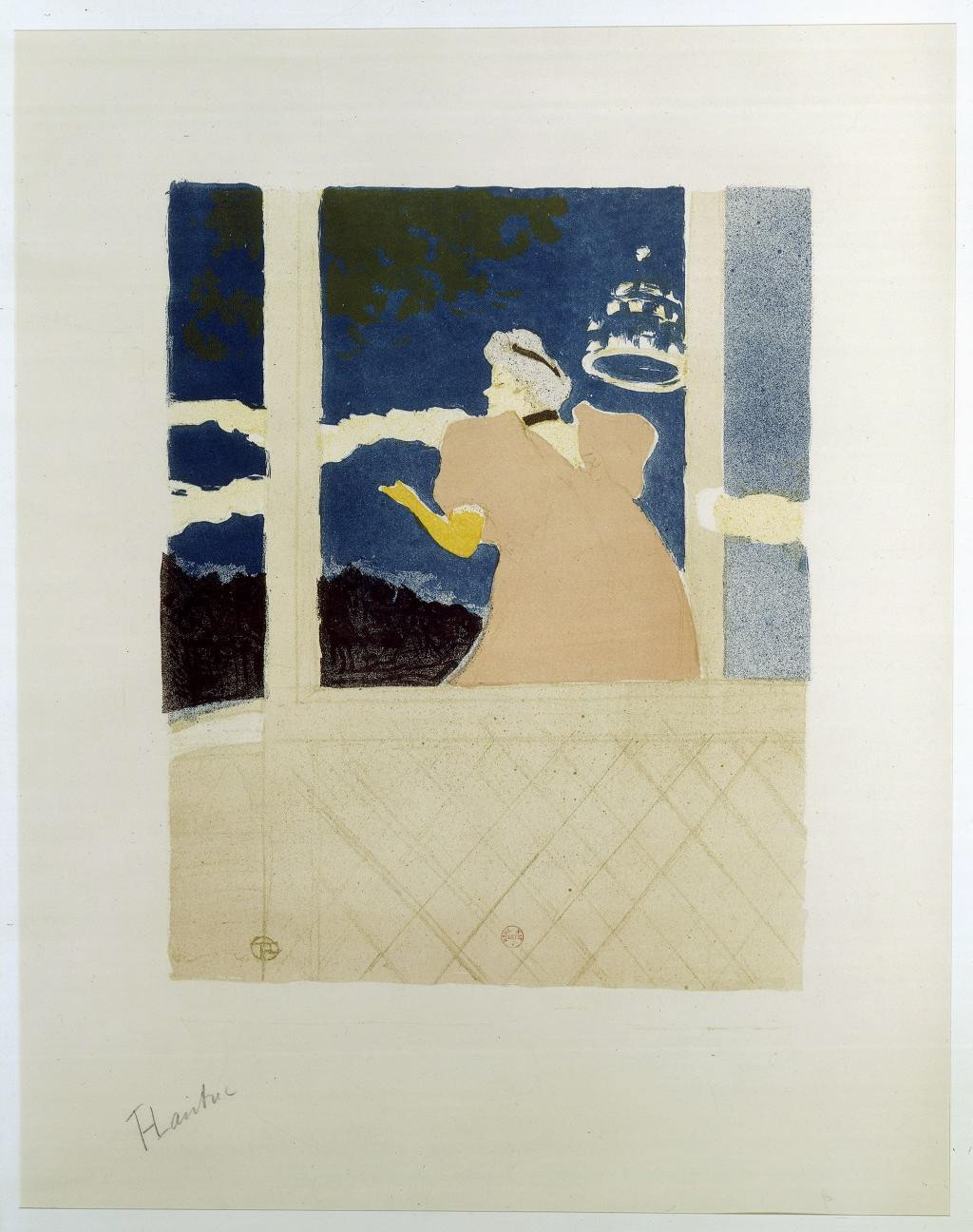
Henri de Toulouse-Lautrec, Aux Ambassadeurs - Chanteuse au café-concert (épreuve d'essai sur vélin en jaune, beige et rose saumon, et état définitif), lithographie, 1894. BnF, Estampes, RESERVE DC-361 (4)-FOL
The Association culturelle des Bouquinistes de Paris (E4, South Nave)
The Seine is the only river in the world that flows between books...
Who other than the great poet, Guillaume Apollinaire, could offer such a picturesque definition of the heart of Paris which, for centuries now, has been the scene of this quite amazing open-air bookstore comprising the numerous bouquinistes standing on the banks of the Seine?
This unique concentration of 230 open-air book shops, that can be visited on either side of the river, is truly without equal anywhere on our beautiful planet! The phenomenon exists and can only be enjoyed here, in Paris.
As Anna Gavalda so pertinently wrote: “Paris without the bouquinistes would no longer be a feast!”...
A key element of city’s culture and heritage, no less than the Eiffel Tower or Montmartre, they are inextricably linked with the cityscape and are a must-see for the millions of tourists who visit our joyous capital every year.
A sort of “missing link” between bookstores selling the latest publications and the shops frequented by book aficionados, the bouquinistes mainly sell works that are no longer available from the former and are not valuable enough for the latter. The outdoor location and the freedom offered by the lightweight nature of their professional structure does not, for all that, mean that you will not meet a number of highly competent booksellers quite capable of holding their own with the very best! Their location on a public thoroughfare offering direct access to the books and unrestricted contact with the bookseller makes for a rewarding cultural exchange. They also form an effective network, referring customers with highly specific requests to their colleagues working in bookstores...
One-third of them can be found on the right bank between the Louvre Museum and the Pont Marie and the remaining two-thirds on the left bank between Rue du Bac and the Arab World Institute. It is on the left bank, the traditional home of the universities as well as printers, bookstores and other actors in the world of publishing, that they are most numerous. There is relative gender parity with about 85 women and 145 men. Their famous boxes in gunmetal green – the mandatory colour – are spread across five different arrondissements, or districts, of the city: the 1st, 4th, 5th, 6th and 7th. There are only a dozen of them in the 7th arrondissement while the 5th is home to the largest number at about seventy.
This microcosm consists of a wide range of personalities with varying career paths. Bouquiniste is very rarely the first choice when starting a career. These curious booksellers range in age from 25 to 90 and the profession requires a certain indifference, or at least steady nerves to brave the elements all year round – one of the more demanding aspects of the job description.
There are now 237 licences in total and each bouquiniste has one. They are granted upon examination of the documents submitted by the numerous applicants by a committee convened once a year, solely for this purpose, by the City of Paris. The city retains ownership of the locations and ensures compliance with the regulations.
This has certainly not always been the case. The profession dates back several centuries and did not always take the form we know today, with the series of large boxes. “Boîte”, or box, is the term adopted by the bouquinistes to refer to these large green containers in which they store the books or other goods they sell to the passers-by. For “other goods” read bric-à-brac, a tradition on the river bank, and sometimes, unfortunately, a few too many products pandering to the tourist trade. Incidentally, it is interesting to note that when someone else lends the bouquinistes a hand or even replaces them in their work, this other person is referred to as an “ouvre-boîte”, or tin-opener...
Originally, a few decades before the invention of the printing press and the new market of second-hand books accompanying this development, the bouquinistes were more like peddlers. These pre-bouquinistes sold their goods out of a small box carried on a shoulder strap or spread out on a mat on the ground. They operated within a very small area at the heart of the city. At the time, the quays along the Seine were rarely faced with stone. For the most part, they were still muddy banks and would remain that way until the First Empire. Some, like the Quai Saint-Michel, were built at the level of the bank. Until the inauguration of the Pont-Neuf – the first bridge designed solely as a promenade – in 1605, all the bridges were line with buildings. For a long time, the Pont Neuf remained the only bridge in Paris with no buildings standing on it resulting in a wide range of small trades setting up business there, ranging from dog groomers to tinkers and including the very first bouquinistes!...
Savary provided the very first official definition of the term Bouquiniste in his 1723 dictionary: “Poor booksellers without the means to have a shop or to sell new works, who ‘estaloyent’ (display) old books on the Pont-Neuf, along the quays and in several other locations in the city...”.
At the time, and until the start of the 19th century, only a few dozen people were granted the right to exercise their trade. And even then, provoking the jealousy of their shop-based counterparts who saw their activity as a form of unfair competition and under the close surveillance of the royal and religious authorities, rulings were often published prohibiting them from any commercial activity for varying periods of time. This was a particularly sensitive issue in the mid-17th century during the Fronde.
They contributed to the clandestine circulation of the famous Mazarinades, the famous pamphlets so critical of the powers of the time. They often had their goods confiscated and some were even given a taste of the dungeons... Playing with politics and morality came with certain risks...
The situation began to change with Napoleon I. He would urbanise the capital considerably and have the quays built in the city centre. This would contribute to extending the scope of activity of our bouquinistes who would increase in number. From only a few dozen authorisations at the beginning of the 19th century, their were 75 licence holders in 1865, 156 in 1892 and 204 in 1920, with the figure rising to about 230 today.
The basic principles of the regulation governing them was established in 1857, but the pivotal date is 1891: it was in this year that the city finally authorised the bouquinistes to leave their goods at the “point of sale” overnight. The numerous boxes were transformed into the now familiar two-metre-long chests. The dimensions of the boxes were specified in 1930 in a municipal by-law. The other key date is 27 January 1943: the bouquinistes’ licences were reduced by two metres from 10 metres to 8 metres. More than 400 linear metres of boxes simply disappeared! Between 80,000 and 100,000 books left the quays! 20% of the books on offer were suddenly no longer for sale! And they have still not returned! In these difficult times for printed works, returning that fifth box to the bouquinistes would be an excellent means of renewing the attractiveness of the quays and giving these emblematic symbols of Paris even greater meaning. This is, indeed, the main request submitted to the Paris City Hall by the Association Culturelle des Bouquinistes de Paris (association bringing together more than 80% of the bouquinistes from the quays) and while it would not be simple to apply, it is nevertheless feasible over time and in several years at the most...
Who other than the great poet, Guillaume Apollinaire, could offer such a picturesque definition of the heart of Paris which, for centuries now, has been the scene of this quite amazing open-air bookstore comprising the numerous bouquinistes standing on the banks of the Seine?
This unique concentration of 230 open-air book shops, that can be visited on either side of the river, is truly without equal anywhere on our beautiful planet! The phenomenon exists and can only be enjoyed here, in Paris.
As Anna Gavalda so pertinently wrote: “Paris without the bouquinistes would no longer be a feast!”...
A key element of city’s culture and heritage, no less than the Eiffel Tower or Montmartre, they are inextricably linked with the cityscape and are a must-see for the millions of tourists who visit our joyous capital every year.
A sort of “missing link” between bookstores selling the latest publications and the shops frequented by book aficionados, the bouquinistes mainly sell works that are no longer available from the former and are not valuable enough for the latter. The outdoor location and the freedom offered by the lightweight nature of their professional structure does not, for all that, mean that you will not meet a number of highly competent booksellers quite capable of holding their own with the very best! Their location on a public thoroughfare offering direct access to the books and unrestricted contact with the bookseller makes for a rewarding cultural exchange. They also form an effective network, referring customers with highly specific requests to their colleagues working in bookstores...
One-third of them can be found on the right bank between the Louvre Museum and the Pont Marie and the remaining two-thirds on the left bank between Rue du Bac and the Arab World Institute. It is on the left bank, the traditional home of the universities as well as printers, bookstores and other actors in the world of publishing, that they are most numerous. There is relative gender parity with about 85 women and 145 men. Their famous boxes in gunmetal green – the mandatory colour – are spread across five different arrondissements, or districts, of the city: the 1st, 4th, 5th, 6th and 7th. There are only a dozen of them in the 7th arrondissement while the 5th is home to the largest number at about seventy.
This microcosm consists of a wide range of personalities with varying career paths. Bouquiniste is very rarely the first choice when starting a career. These curious booksellers range in age from 25 to 90 and the profession requires a certain indifference, or at least steady nerves to brave the elements all year round – one of the more demanding aspects of the job description.
There are now 237 licences in total and each bouquiniste has one. They are granted upon examination of the documents submitted by the numerous applicants by a committee convened once a year, solely for this purpose, by the City of Paris. The city retains ownership of the locations and ensures compliance with the regulations.
This has certainly not always been the case. The profession dates back several centuries and did not always take the form we know today, with the series of large boxes. “Boîte”, or box, is the term adopted by the bouquinistes to refer to these large green containers in which they store the books or other goods they sell to the passers-by. For “other goods” read bric-à-brac, a tradition on the river bank, and sometimes, unfortunately, a few too many products pandering to the tourist trade. Incidentally, it is interesting to note that when someone else lends the bouquinistes a hand or even replaces them in their work, this other person is referred to as an “ouvre-boîte”, or tin-opener...
Originally, a few decades before the invention of the printing press and the new market of second-hand books accompanying this development, the bouquinistes were more like peddlers. These pre-bouquinistes sold their goods out of a small box carried on a shoulder strap or spread out on a mat on the ground. They operated within a very small area at the heart of the city. At the time, the quays along the Seine were rarely faced with stone. For the most part, they were still muddy banks and would remain that way until the First Empire. Some, like the Quai Saint-Michel, were built at the level of the bank. Until the inauguration of the Pont-Neuf – the first bridge designed solely as a promenade – in 1605, all the bridges were line with buildings. For a long time, the Pont Neuf remained the only bridge in Paris with no buildings standing on it resulting in a wide range of small trades setting up business there, ranging from dog groomers to tinkers and including the very first bouquinistes!...
Savary provided the very first official definition of the term Bouquiniste in his 1723 dictionary: “Poor booksellers without the means to have a shop or to sell new works, who ‘estaloyent’ (display) old books on the Pont-Neuf, along the quays and in several other locations in the city...”.
At the time, and until the start of the 19th century, only a few dozen people were granted the right to exercise their trade. And even then, provoking the jealousy of their shop-based counterparts who saw their activity as a form of unfair competition and under the close surveillance of the royal and religious authorities, rulings were often published prohibiting them from any commercial activity for varying periods of time. This was a particularly sensitive issue in the mid-17th century during the Fronde.
They contributed to the clandestine circulation of the famous Mazarinades, the famous pamphlets so critical of the powers of the time. They often had their goods confiscated and some were even given a taste of the dungeons... Playing with politics and morality came with certain risks...
The situation began to change with Napoleon I. He would urbanise the capital considerably and have the quays built in the city centre. This would contribute to extending the scope of activity of our bouquinistes who would increase in number. From only a few dozen authorisations at the beginning of the 19th century, their were 75 licence holders in 1865, 156 in 1892 and 204 in 1920, with the figure rising to about 230 today.
The basic principles of the regulation governing them was established in 1857, but the pivotal date is 1891: it was in this year that the city finally authorised the bouquinistes to leave their goods at the “point of sale” overnight. The numerous boxes were transformed into the now familiar two-metre-long chests. The dimensions of the boxes were specified in 1930 in a municipal by-law. The other key date is 27 January 1943: the bouquinistes’ licences were reduced by two metres from 10 metres to 8 metres. More than 400 linear metres of boxes simply disappeared! Between 80,000 and 100,000 books left the quays! 20% of the books on offer were suddenly no longer for sale! And they have still not returned! In these difficult times for printed works, returning that fifth box to the bouquinistes would be an excellent means of renewing the attractiveness of the quays and giving these emblematic symbols of Paris even greater meaning. This is, indeed, the main request submitted to the Paris City Hall by the Association Culturelle des Bouquinistes de Paris (association bringing together more than 80% of the bouquinistes from the quays) and while it would not be simple to apply, it is nevertheless feasible over time and in several years at the most...
Jérôme Callais, bouquiniste
For more information:
bouquinistesdesquais@laposte.net
to contact the President of the association, Jérôme Callais, the Treasurer, Sylvie Mathias and the Secretary, Michel Bouetard
bouquinistesdesquais@laposte.net
to contact the President of the association, Jérôme Callais, the Treasurer, Sylvie Mathias and the Secretary, Michel Bouetard
CATALOG 2018
EXHIBITORS 2018
PHOTOS/VIDEO
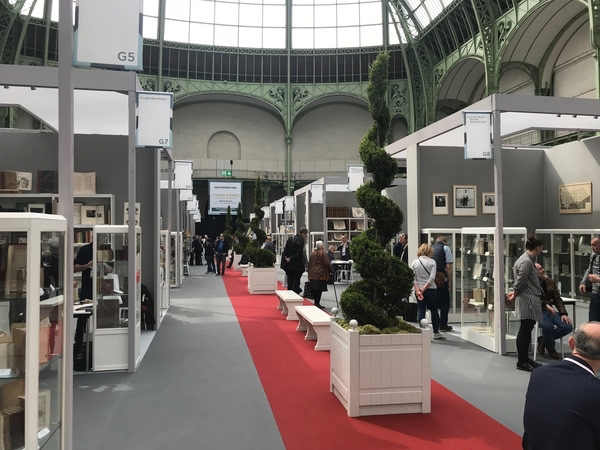
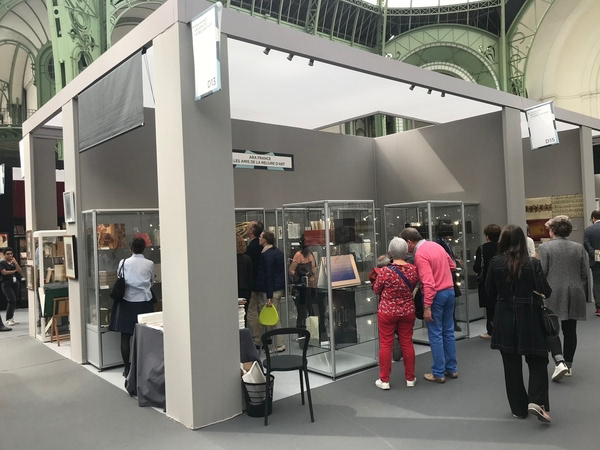
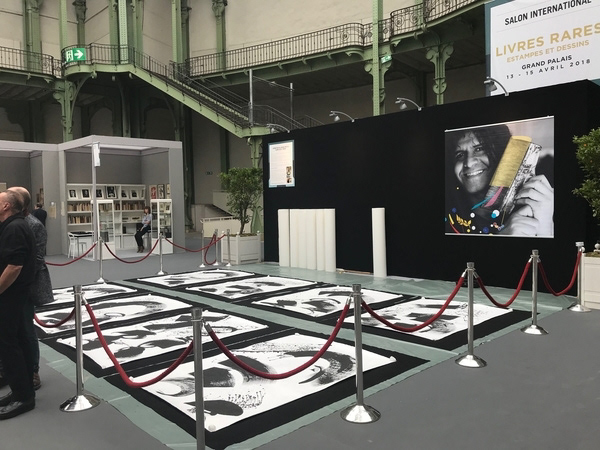
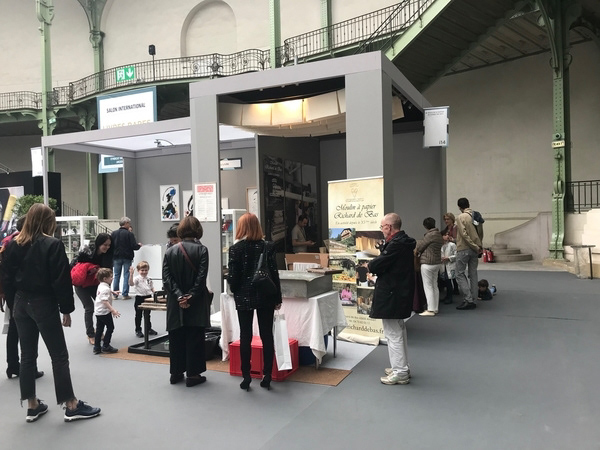
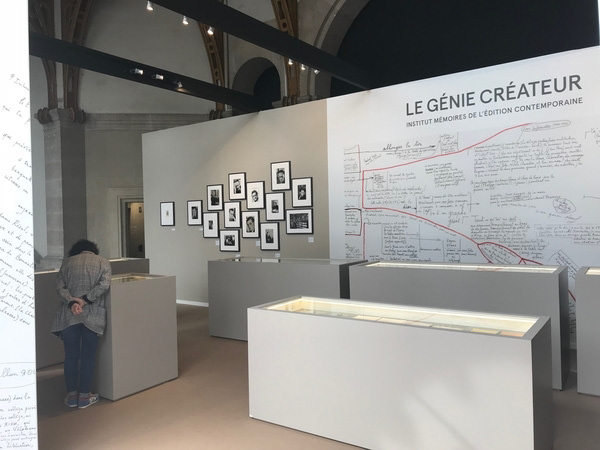
GALLERY
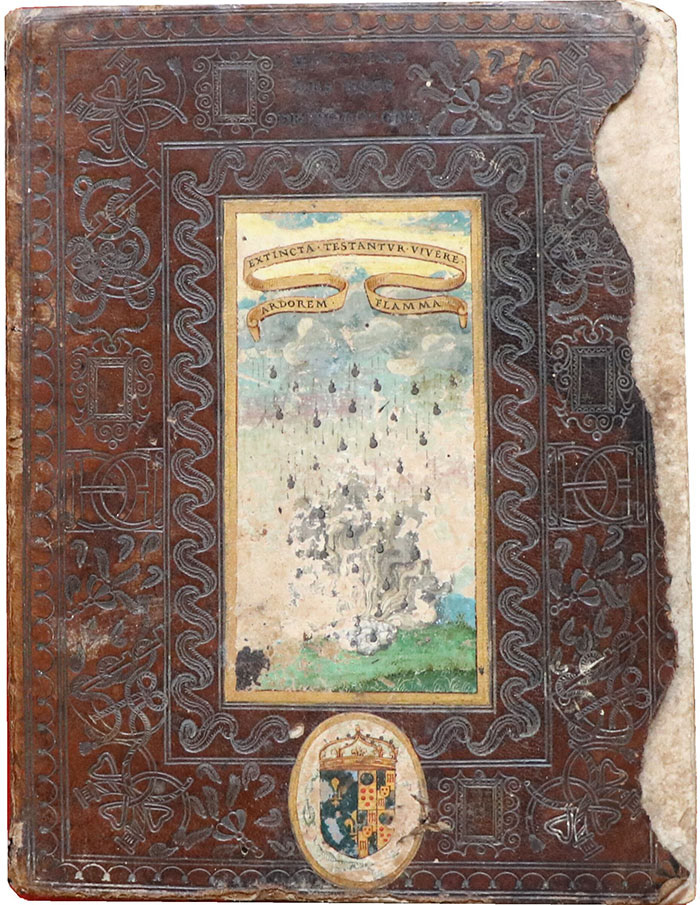
ibrairie Ancienne Jean-Marc DECHAUD - Herburt de Fulstin, Histoire des Roys et Princes de Poloigne, maroquin brun orné d'un décor de deuil aux emblemes de Catherine de Medicis
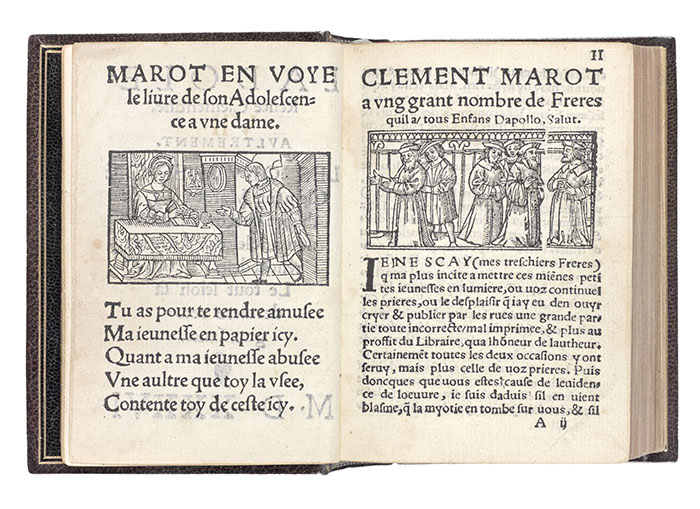
Librairie Laurent COULET - Marot Clément, L'adolescence Clémentine, 1536
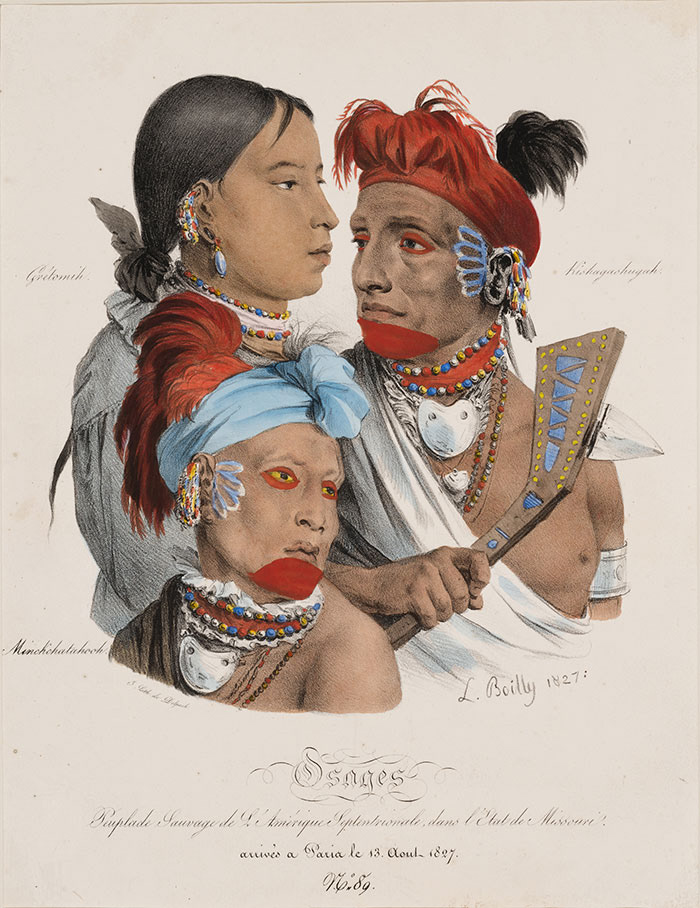
Librairie CHAMONAL - Louis Boilly, 1827, Lithographie faisant partie d'une collection de 65 ouvrages sur les Indiens d'Amerique du Nord
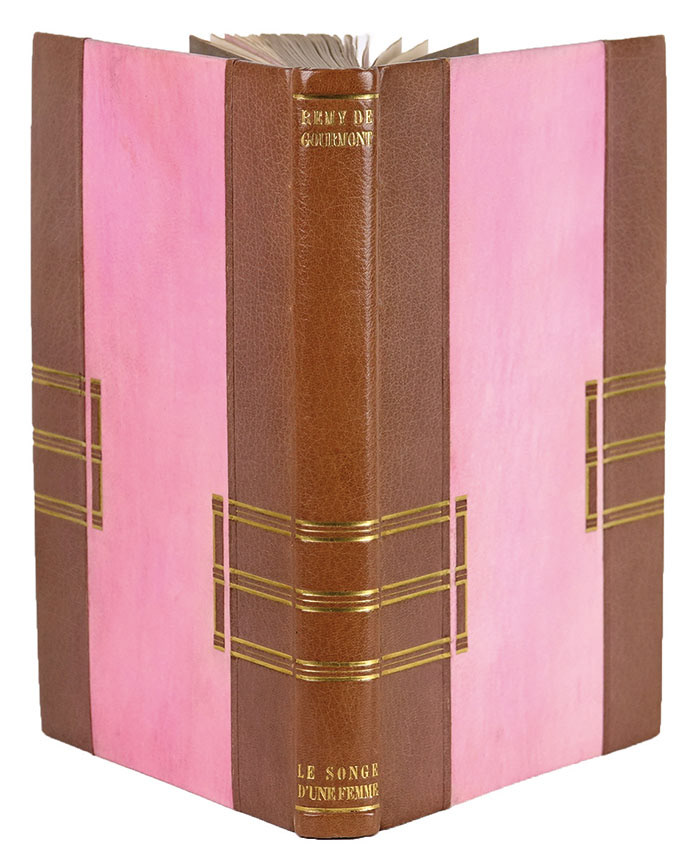
Librairie des CARRÉS - Reliure Art Déco de Rose Adler, 1925, pour Le songe d'une femme, ouvrage de Remy de Gourmont, illustré par Laboureur
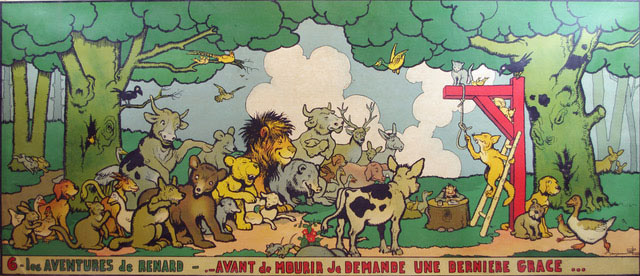
Librairie Gaëlle CAMBON - Benjamin Rabier, Les aventures de renard, six panneaux lithographiés à l'usage des écoles, 1935
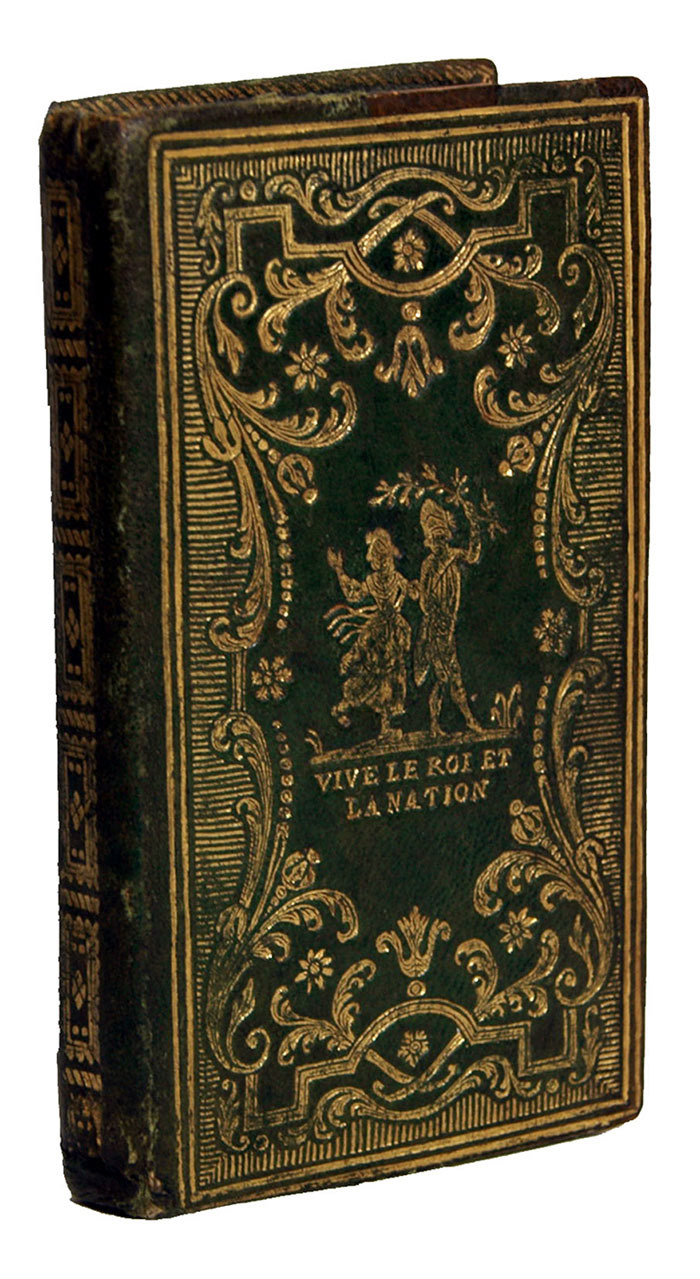
Librairie BUSSER - Almanach pour l'annee 1792, maroquin vert portant l'inscription
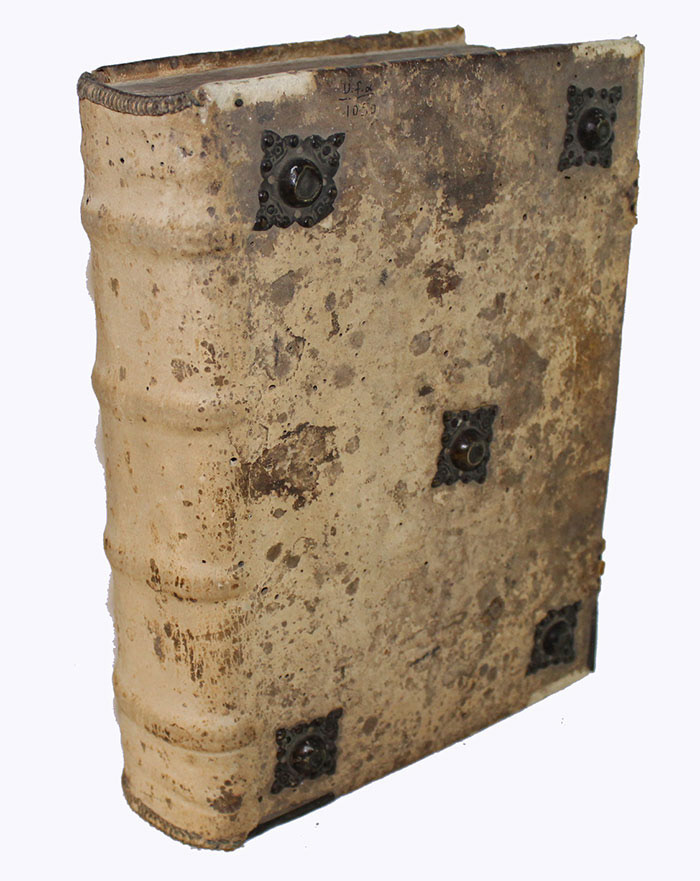
Librairie BERTRAN - Coutume Coustumier du Pays et duché de Normandie, Paris, Jean du Pré, 1483
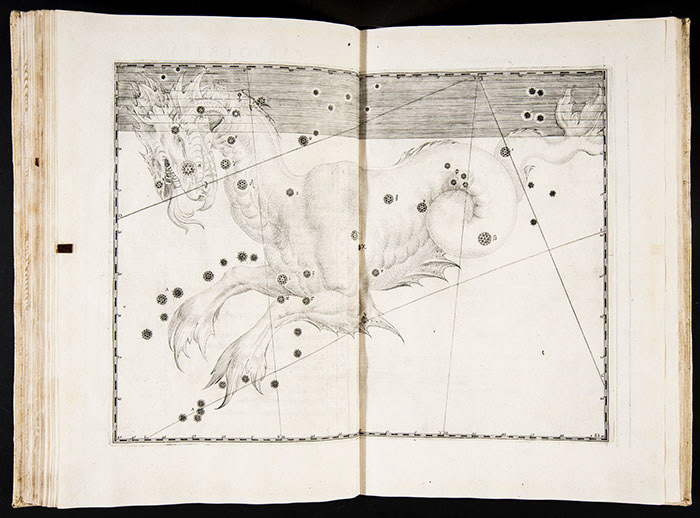
Antiquariato Librario BADO E MART - Bayer Johann, Uranometria, 1603
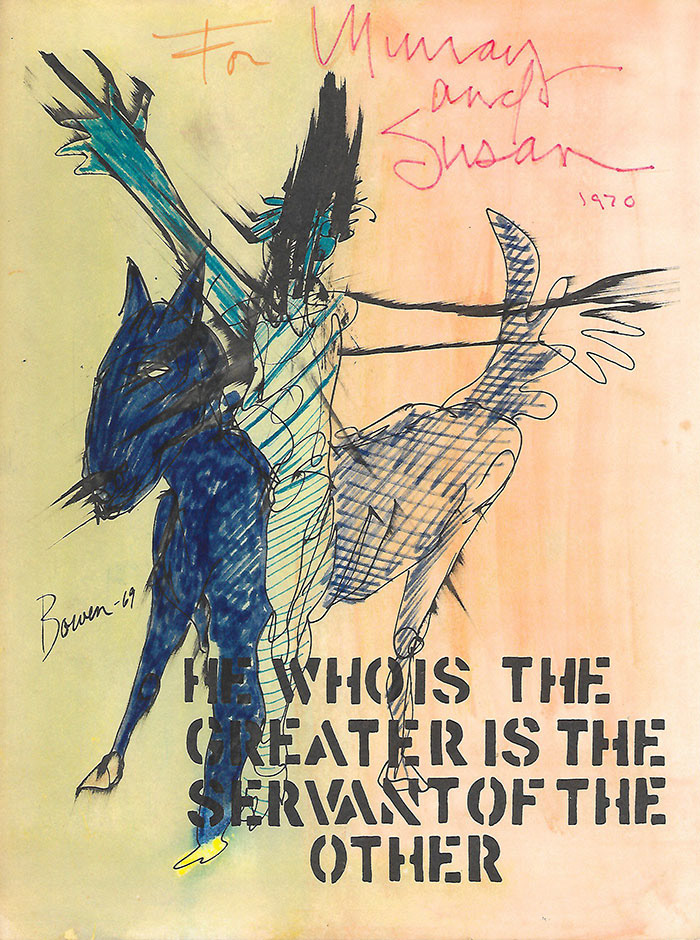
Librairie Les AUTODIDACTES - Michael Bowen, a Journey to Nepal He who is the Greater is the servant of the Other, 1970
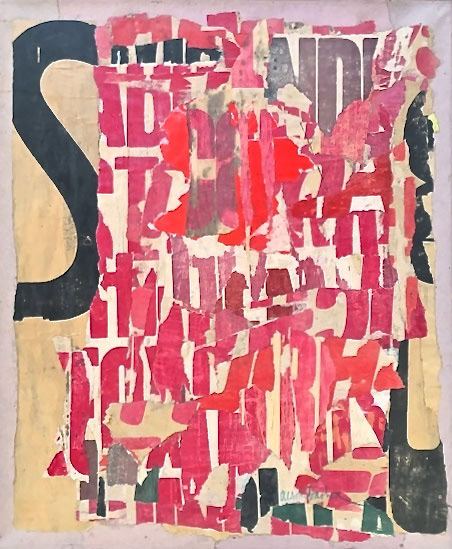
ARTVIE Galerie Sylvie Vervaët - Arthur Aeschbacher, Une tasse, 1960, collage sur papier marouflé sur toile par l'artiste
